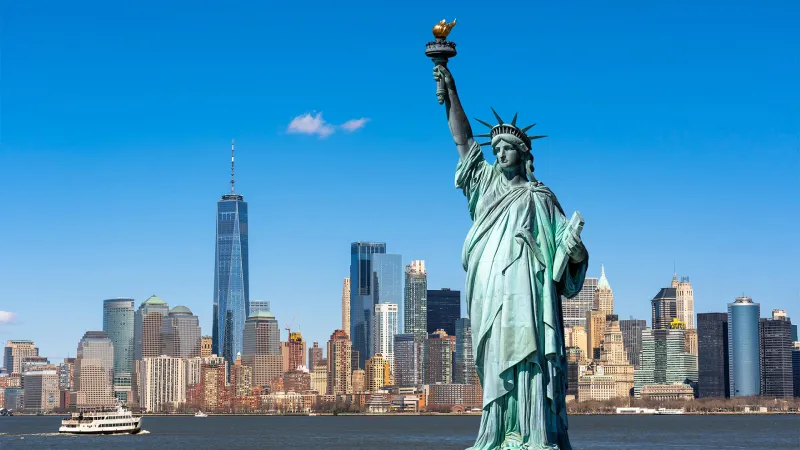Climate change is expected to increase NYC’s vulnerability to weather-related events. To address this, NYC has redesigned neighborhoods and buildings for resilience.
The first in the world, NYC’s new law requires city buildings (except places of worship and rent-regulated housing) to limit their emissions. Owners must improve insulation, lighting and heating systems.
1. The Carbon Challenge
The Carbon Challenge is a voluntary program that brings together private companies, institutions and nonprofits to commit to reduce their greenhouse gas emissions. Participants receive support and resources to achieve their targets. Together, current participants are projected to reduce citywide emissions by over 600,000 metric tons-equivalent to taking more than 300,000 cars off the road!
The New York State Climate Leadership and Community Protection Act (Climate Act) establishes ambitious greenhouse gas emission reduction targets, including a 40 percent reduction by 2030 and 85 percent reduction by 2050. These goals will be achieved through the combination of mitigation and adaptation actions.
NYC is a leader in climate change adaptation, with programs that share life-saving information about hurricanes and other natural disasters, and promote group purchasing through Solarize NYC for residents to make it easier for them to install rooftop solar energy.
2. Congestion Pricing
Congestion pricing was first proposed by Mayor Michael Bloomberg as part of his PlaNYC strategic plan in 2007. The goal is twofold: to unclog the busiest streets where unchecked car use imposes pollution and congestion, creates safety hazards, and gums up transit service; and raise a billion dollars a year to support the city’s ailing subway and bus system.
Buildings are the largest source of greenhouse gases in NYC. The City Council’s landmark 2019 legislation puts caps on emissions, encouraging buildings to invest in energy efficiency solutions (like installing rooftop solar) and requiring larger buildings to track their carbon use.
The city’s resiliency efforts also include outreach to communities most vulnerable to climate change, like elderly residents and neighborhoods in ecologically sensitive areas. These efforts are especially important in communities with disproportionally high rates of chronic illnesses like asthma and heart disease.
3. Public Solar
The de Blasio administration is expanding solar power to increase the number of New Yorkers who can access clean energy. It’s doing this by launching community solar, which allows people to subscribe to a shared clean-energy system without having panels installed on their homes.
This is particularly valuable for lower-income families, who spend a disproportionate share of their income on energy costs. The city is also increasing the amount of solar-powered buildings by passing laws to require green roofs on all new construction and to use community-based organizations to install them; offering a property tax abatement for solar; and working with the State on regulatory matters that reduce barriers to solar.
It’s also educating students about climate change in schools, and launching career programs to give 1,000 public school students work-based learning opportunities related to clean energy. This is part of PlaNYC’s plan to grow green jobs and create an economy built on a stronger, healthier planet.
4. Electric Vehicles
The City is tackling carbon emissions by making it easier for New Yorkers to adopt electric vehicles. This includes expanding the availability of fast chargers and destination chargers, and reducing barriers to EV ownership such as charging station location and competitive street parking.
The city’s buildings also generate a large portion of its greenhouse gas emissions, and 2019 City Council legislation mandates a comprehensive plan for energy efficiency and emissions reduction. Green buildings, including solar panels and citywide composting, and reduced waste from city operations help limit CO2 emissions.
Investing in climate resilience and adaptation helps the city protect against storm surges like Hurricane Sandy, extreme heat and flooding, as well as boost vulnerable neighborhoods. And focusing on community-based organizing in environmental justice communities helps ensure these neighborhoods’ needs are taken into account when developing climate and clean energy policies.
5. Green Buildings
The city’s building codes are imposing green requirements on the private sector, and consumers are demanding sustainable homes and offices. In fact, new buildings that incorporate green practices have higher resale values.
The Climate Mobilization Act includes a provision to require buildings over 25,000 square feet to limit their greenhouse gas emissions, starting in 2024. Violators will face steep fines.
One example is the 102-story office tower at 350 Fifth Avenue, a LEED Gold for Existing Buildings project completed in 2011. The retrofit reduced energy consumption and emissions by 38 percent. New York is already among the most energy-efficient cities in the country, but that’s not enough if we’re going to meet our climate change goals. That’s why the City’s Green Infrastructure program is working to increase our green space.






